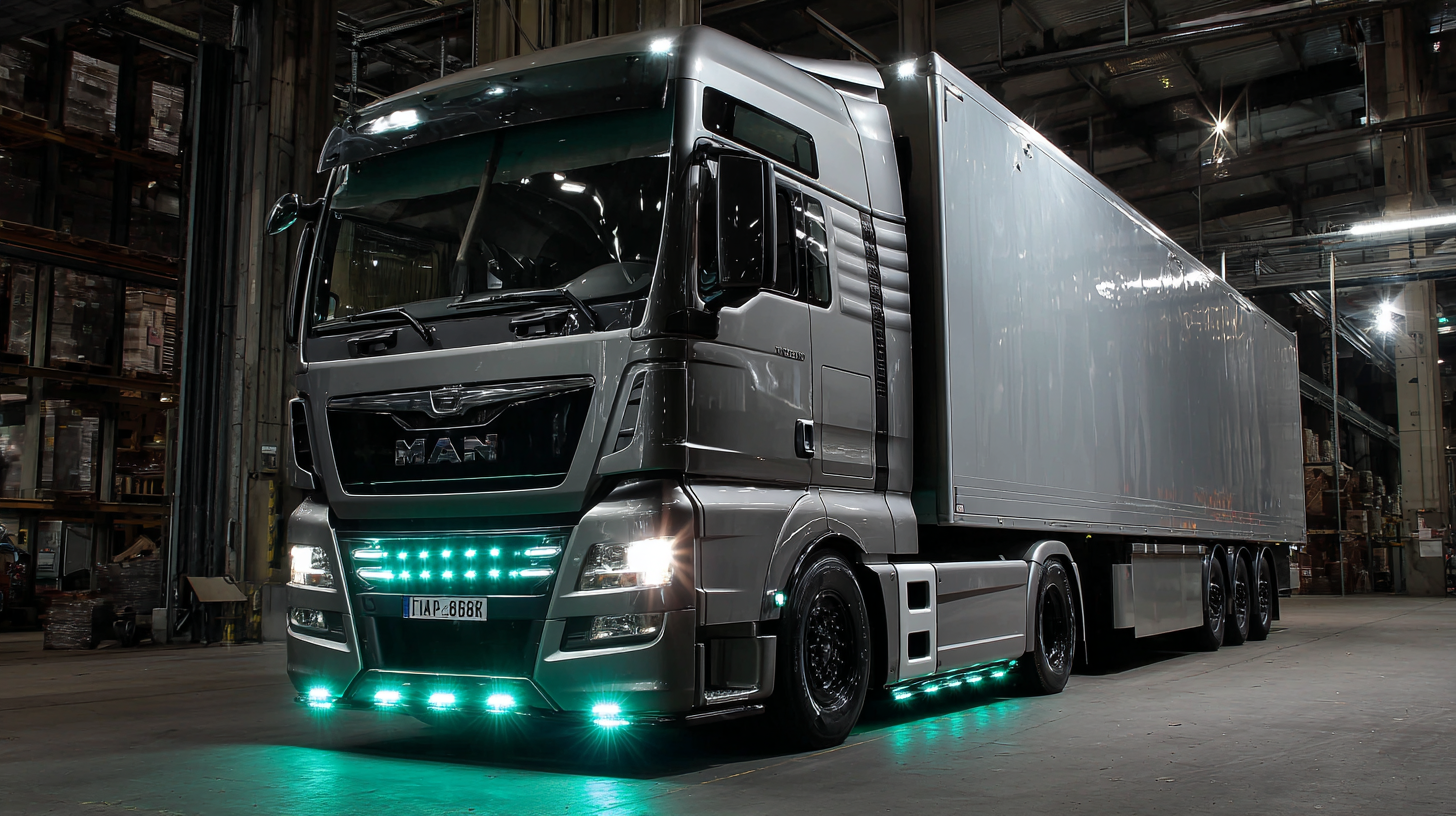As we look ahead to 2025, the market for Driving Lights For Trucks is poised for significant transformation, driven by advancements in technology and changing consumer preferences. According to a recent report by MarketsandMarkets, the global automotive lighting market is expected to grow from $27.87 billion in 2020 to $38.90 billion by 2025, reflecting a compound annual growth rate (CAGR) of 7.3%. This expansion is largely fueled by the increasing demand for enhanced safety features and improved visibility in challenging driving conditions.

Innovations such as LED and laser lighting technologies are not just revolutionizing performance but also enhancing energy efficiency, which resonates well with environmentally conscious buyers. As we explore future trends and market insights for the best Driving Lights For Trucks, it becomes evident that manufacturers must adapt to these shifts, focusing on durability, adaptability, and cutting-edge design to meet the evolving needs of truck owners.
As we look toward 2025, the landscape of truck lighting systems is poised for significant transformation, driven by emerging technologies. One of the most anticipated advancements is the integration of adaptive lighting systems. These systems will utilize sensors and cameras to detect surrounding conditions, automatically adjusting light intensity and direction to enhance visibility and safety. This capability not only minimizes glare for oncoming traffic but also ensures optimal illumination for various driving environments, from urban streets to rugged terrains.
Another exciting trend is the rise of LED and laser lighting technologies, which are set to redefine efficiency and performance in truck lighting. LED lights provide longer lifespans and lower energy consumption compared to traditional halogen bulbs, while laser lights offer remarkable brightness and focus. By 2025, we can expect these technologies to become mainstream in heavy-duty trucks, leading to improved safety features and longevity of lighting systems. Furthermore, the incorporation of smart technologies, such as connectivity with navigation systems and real-time traffic data, will enable truck drivers to receive alerts about road conditions and adjust their lighting accordingly, setting a new standard for operational efficiency on the road.
The truck driving lights market is on the brink of significant evolution, driven by several key market factors. Firstly, the ongoing advancements in LED technology have dramatically increased the efficiency and longevity of driving lights, making them a preferred choice among truck owners. According to a recent market research report, the global truck lighting market is expected to reach $11.2 billion by 2025, exhibiting a robust compound annual growth rate (CAGR) of 5.4% from 2020 to 2025. This growth is largely attributed to the rising awareness of energy-efficient lighting solutions and stringent regulations regarding vehicle safety.
Moreover, the surge in e-commerce and freight transport necessitates enhanced visibility and safety during night-time operations. As truck fleets expand, the demand for high-performance driving lights that improve road visibility will continue to rise. Additionally, the integration of smart technologies, such as adaptive lighting systems that adjust based on speed and road conditions, is increasingly influencing consumer choices. In fact, a study indicates that over 60% of fleet managers consider advanced lighting systems as a pivotal factor in their purchase decisions.
**Tips:** Ensure to frequently check for the latest LED developments to keep your fleet updated with the most energy-efficient options. Also, consider investing in smart lighting systems that adjust to varying driving conditions, especially if your operations require nighttime travel. Lastly, stay informed about local and national regulations regarding truck lighting to ensure compliance and safety on the roads.
As we look toward 2025, consumer preferences in driving lights for trucks are undergoing significant transformations, particularly with a marked shift toward LED technology and adaptive lighting systems. LED lights are rapidly gaining traction due to their efficiency, longevity, and superior brightness. Truck owners increasingly recognize that LED lights offer a more sustainable solution while enhancing visibility during night drives or adverse weather conditions. This growing consumer demand for energy-efficient lighting options is likely to shape product offerings in the market, encouraging manufacturers to innovate and integrate advanced features.
Moreover, adaptive lighting technology is becoming an essential factor for many consumers. This feature adjusts the light output according to driving conditions, improving safety and performance on the road. As truck drivers navigate varying terrains and weather scenarios, the ability to customize lighting in real-time becomes invaluable. The trend indicates a preference for products that prioritize both functionality and safety, compelling brands to enhance their designs and smart capabilities. By 2025, it is expected that trucks equipped with next-generation LED and adaptive lighting will dominate the market, catering to the evolving needs and preferences of truck owners.

As the trucking industry faces increasing pressure to adopt sustainable practices, innovations in eco-friendly truck lights are emerging as a key trend. According to a recent report by the Freight Transportation Research Group, the demand for energy-efficient lighting solutions is projected to grow by 30% by 2025. This shift is driven by regulatory changes and a growing awareness of the environmental impacts of conventional manufacturing processes. Manufacturers are exploring alternative materials such as recycled plastics and advanced composites to create durable, lightweight lighting solutions that minimize energy consumption.
Furthermore, the integration of LED technology is revolutionizing the design of truck lights. LED lights are not only more energy-efficient, consuming up to 75% less energy than traditional halogen lamps, but they also last significantly longer, reducing waste and the frequency of replacements. Industry data from the Lighting Research Center indicates that the adoption of LED technology in commercial vehicles could lead to a reduction in greenhouse gas emissions by over 2 million tons by 2025. This highlights the importance of sustainable innovation in the trucking sector, setting the stage for future advancements in driving lights that support both operational efficiency and environmental responsibility.
As we look toward 2025, the competitive landscape of the truck lighting market is set to undergo significant transformations. Major players in the industry are increasingly focusing on innovation to meet the demands of modern truck drivers seeking enhanced visibility and safety on the road. Leading manufacturers are investing in advanced technologies such as LED and adaptive lighting systems, which not only improve light performance but also offer better energy efficiency. This shift aligns with the growing emphasis on sustainability within the transportation sector.
Moreover, strategic partnerships and collaborations among industry giants are reshaping the market dynamics. Companies are recognizing the value of synergy in research and development, allowing them to pool resources and expertise to deliver cutting-edge solutions. The emergence of new entrants is also intensifying the competition, prompting established brands to refine their product offerings and expand their market reach. As a result, the truck lighting sector is becoming increasingly diverse, with a range of products tailored to various customer needs, thereby enhancing user experience and driving market growth.

